Commissioning, Qualification, and Validation is a cornerstone of quality assurance in pharmaceutical manufacturing and medical device production. It ensures equipment, systems, and processes meet regulatory standards and perform as intended. However, validation is a complex process, often accompanied by numerous questions from stakeholders seeking to optimize compliance and operational efficiency.
This blog addresses the 10 burning questions about CQV, shedding light on its challenges, best practices, and strategies for success.
1. What Is CQV, and Why Is It Important?
CQV refers to a systematic approach to ensuring that facilities, utilities, equipment, and processes meet predefined specifications and regulatory requirements.
It encompasses three main stages:
- Commissioning: Verifies the installation and functionality of systems and equipment.
- Qualification: Establishes documented evidence that systems and equipment operate as intended.
- Validation: Confirms that processes consistently produce results within defined parameters.
The process is critical for maintaining product quality, patient safety, and regulatory compliance. Without it, organizations risk manufacturing inefficiencies, product recalls, or penalties from regulatory agencies.
2. What Are the Key Stages involved?
The CQV lifecycle comprises several phases, each with specific objectives:
- User Requirements Specification:
- System Classification:
- System Risk Assessment
- Design Review and Design Qualification
- Commissioning
- Qualification
- Validation
These stages collectively establish the reliability and compliance of equipment and processes, minimizing risks in production.
3. What Are the Biggest Challenges in CQV?
Common challenges in CQV include:
- Resource Constraints: Lack of skilled personnel or budget limitations.
- Complex Regulations: Adapting to stringent and evolving compliance standards.
- Data Integrity Issues: Ensuring accurate and traceable documentation.
- Cross-Functional Collaboration: Coordinating between various teams like engineering, quality, and operations.

Overcoming these challenges requires proactive planning, robust training programs, and leveraging expert guidance.
Read More: 7 Tips to Train Your Team Better on Compliance
4. How Do You Develop a Master Plan?
A validation master plan is a strategic document outlining the approach, scope, and deliverables for CQV activities. Key components include:
- Project Scope: Define systems, equipment, and processes covered under CQV.
- Regulatory References: Cite applicable guidelines like FDA, EU GMP, and ISO standards.
- Roles and Responsibilities: Clearly assign tasks to stakeholders.
- Risk Assessment: Identify potential risks and mitigation strategies.
An effective validation master plan ensures alignment between teams and provides a roadmap for successful project execution.
5. What Are the Common Mistakes During the process?
Mistakes during CQV often stem from:
- Inadequate Documentation: Missing or incomplete records can lead to compliance failures.
- Skipping Validation Steps: Rushing through phases like PQ compromises quality.
- Poor Change Management: Untracked modifications can disrupt validation efforts.
- Underestimating Time and Cost: Failing to allocate sufficient resources leads to project delays.
Avoiding these pitfalls requires meticulous planning, thorough training, and adherence to SOPs.
6. How Does Risk Assessment Fit Into it?
Risk assessment is integral to CQV, enabling teams to prioritize efforts based on potential impact. Tools like Failure Mode and Effects Analysis (FMEA) help identify vulnerabilities in processes or equipment.
For example, high-risk systems such as sterile processing units warrant more rigorous validation protocols. By focusing on critical control points, organizations can optimize resource allocation and improve compliance outcomes.
7. What Role Does Documentation Play?
Documentation is the backbone of CQV, serving as evidence of compliance during audits. Essential documents include:
- User Requirement Specifications (URS): Define the intended purpose of equipment or systems.
- Test Protocols and Reports: Detail procedures and results for IQ, OQ, and PQ.
- Standard Operating Procedures (SOPs): Guide routine operations and maintenance.
Accurate and traceable documentation not only satisfies regulatory requirements but also facilitates troubleshooting and future upgrades.
Read More: CQV: 6 Crucial Truths Every Pharma Professional Should Know
8. How Can Digital Tools Enhance CQV?
Digital transformation is revolutionizing CQV, offering tools to automate and streamline processes. Examples include:

- Validation Management Software: Tracks progress and ensures consistency across all phases.
- Electronic Documentation Systems: Reduce errors and improve accessibility.
- IoT Sensors: Enable real-time monitoring of equipment performance.
Adopting these technologies enhances efficiency, reduces human error, and provides a competitive edge.
9. What Is the Impact of Regulatory Audits on CQV?
Regulatory audits assess whether CQV processes meet compliance standards. Common focus areas include:
- Validation Documentation: Inspecting IQ, OQ, and PQ records.
- Change Management Logs: Reviewing tracked modifications.
- Training Records: Verifying staff competency.
Preparing for audits involves conducting internal reviews, addressing gaps, and maintaining up-to-date documentation.
Read More: 6 Things to Know When You Are Choosing Your Compliance Partner
10. How Can You Ensure Continuous Improvement in CQV?
CQV is not a one-time effort but an ongoing commitment to quality. Strategies for continuous improvement include:
- Regular Training: Keep teams updated on best practices and regulatory changes.
- Periodic Reviews: Assess the effectiveness of validation protocols and adjust as needed.
- Feedback Loops: Collect insights from operations teams to refine processes.
By fostering a culture of quality, organizations can sustain compliance and operational excellence.
How Incepbio Can Help with your CQV needs
At Incepbio, we specialize in delivering tailored solutions for firms that meet the highest industry standards:
- End-to-End Support: From developing CQVMPs to executing IQ, OQ, and PQ protocols.
- Expert Team: A multidisciplinary team with extensive regulatory expertise.
- Advanced Tools: Cutting-edge software for streamlined validation processes.
- Compliance Assurance: Robust documentation and audit readiness for peace of mind.

Partnering with Incepbio ensures your CQV processes are efficient, compliant, and aligned with your operational goals. To learn more about our services, visit here.
Conclusion
CQV is a multifaceted process that requires meticulous planning, execution, and continuous improvement. By addressing these 10 burning questions, organizations can gain clarity on challenges, best practices, and strategies to optimize their validation efforts.
Ready to elevate your CQV processes? Contact Incepbio today to learn how we can help you achieve compliance and operational excellence.
Authors
-

Shubhankar is a pharmaceutical professional with over 10 + years of experience in Drug Substance (Upstream), Aseptic Batch Manufacturing (Drug Product), Process Validation, and CQV (Commissioning, Qualification, and Validation). He is skilled in managing the qualification and implementation of protocols for URS, DQ, FAT, SAT, IQ, OQ, and PQ for new equipment. Holds sounds knowledge of CSV (Computer System Validation) in compliance with 21 CFR 210/211, 21 CFR Part 11, and European regulations. Shubhankar is experienced in creating cGMP-oriented documentation, including SOPs, BPRs, Calibration Records, and deviation investigations. Expertise in overseeing various validation activities, such as HVAC, Utility, and Process Equipment Validation.
View all posts -

An experienced SEO professional, Adithya is someone fascinated by the art of content creation. He has published over 700 articles under his name. Additionally, he has worked for companies like TCS, Essentially Sports, and holds expertise in the field of digital marketing
View all posts -






